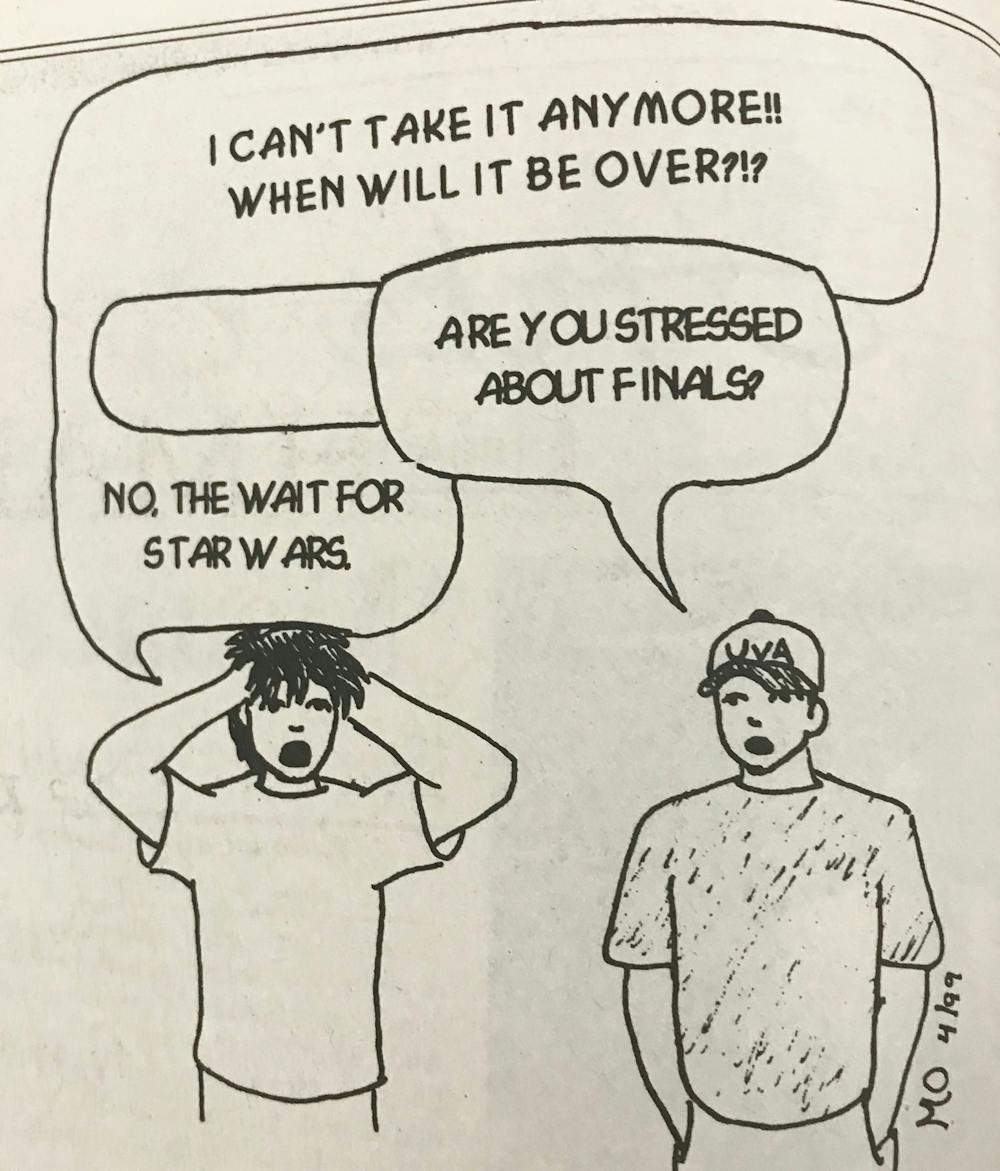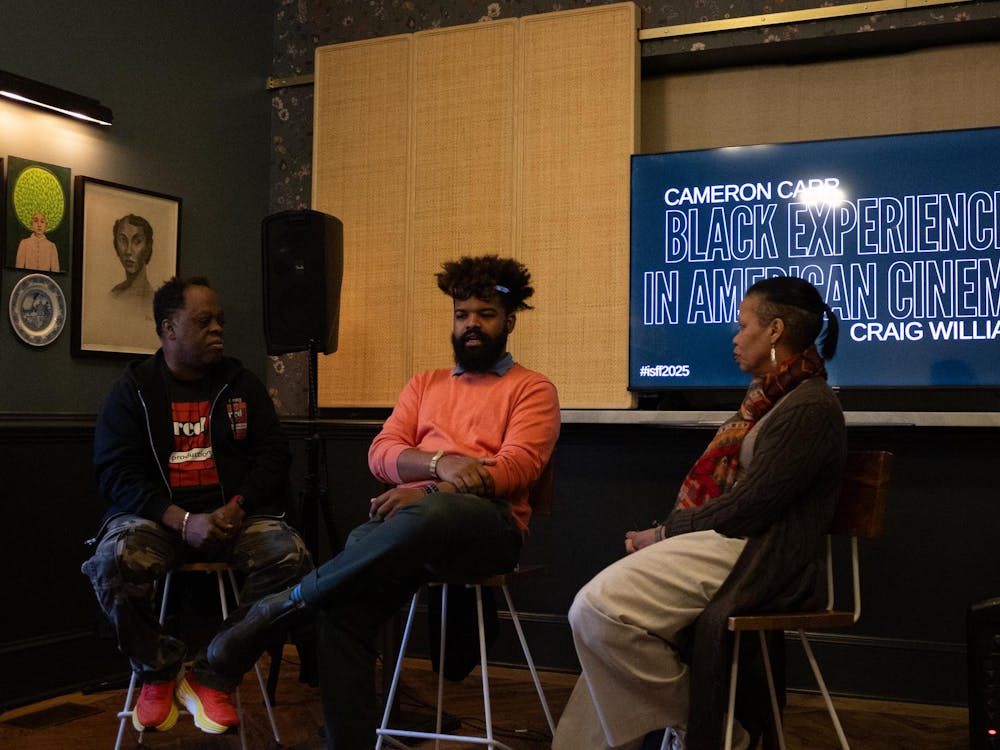They’re on the walls of normie boys’ dorm rooms around the world — unframed, probably off-center and purchased from a weird sale outside the bookstore the second week of classes. Brad Pitt and Edward Norton face down visitors in green-tinged light while wielding a bar of pink soap; Uma Thurman — with her now iconic black bob — smokes, apathetic, while splayed on a bed. Posters from films like “Fight Club” (1999) and “Pulp Fiction” (1994) have become popular and significant objects of expression for certain groups of college students more than two decades later — but what did this landscape look like when they hit theaters?
The “Arts and Entertainment” section of The Cavalier Daily was not in existence until the mid-90s. Before this, brief write ups for new films or arts-related events might have been published under the “Lifestyle” section, but there was no dedicated space within the student-run newspaper to write exclusively about media products. And that’s what the early terms of the section were — seemingly lacking a staff large enough to cover local events, most of the articles were reviews of nationally released movies, television shows, music and books, along with some coverage of Charlottesville area concerts and commentary on media trends more generally.
In the last two years before the new millennium, the national media landscape was flush with content that, in retrospect, shifted the way art is made, discussed and consumed. In the April 30, 1999 issue, A&E Associate Editor Michael Gillespie previewed the upcoming slate of summer movies — teed up with what was expected to be one of the biggest cinematic events of the year, the release of “Star Wars: Episode I — The Phantom Menace.”
“You cannot talk about this summer without mentioning the big daddy of releases,” Gillespie wrote, explaining the secrecy and fervor surrounding the film. “Chances are that “Episode I” won’t meet the impossible standards that Lucas has set for himself, but the “Menace” should rules the screens this summer.”
Predictably, “The Phantom Menace” did win the box office that summer, raking in over $420 million — and as Gillespie speculated, expectations were not met upon the release of Lucas’ much-memed prequel trilogy.
Many of the other films Gillespie previews, however, remain cultural touchstones and evidence of the changing market. The beloved romantic comedy “Notting Hill” premiered the week after “The Phantom Menace” and starred, in Gillespie’s words, “Hugh ‘Oh look how terribly British I am’ Grant” opposite Julia Roberts. That summer was also the theatrical premiere of director Stanley Kubrick’s last film, “Eyes Wide Shut,” and “The Blair Witch Project,” whose found-footage style influenced popular techniques of horror filmmaking for years to come.
While the majority of national releases tend to fade into the background, the section’s work in reflecting on the year and decade in popular media adds an interesting layer when viewing the articles in retrospect. In two articles — one in August of 1999 and one in December — Editor Ben Nuckols and Gillespie each attempt to categorize the landscape of the decade in terms of the films they have consumed and written about.
Nuckols noted that the “Millenium ends with macabre movies” like “Fight Club,” Martin Scorses’s “Bringing Out the Dead” and “The Green Mile,” a Steven King adaptation starring Tom Hanks. Nuckols and Gillespie then went on to compile a “best of ‘90s list” in December, assembling their picks for the ten best films and adding a colorful bit of self-reflection.
“It’s impossible to say whether or not this decade will stand the test of time,” Gillespie and Nuckols wrote. “Regardless, we think our respective choices for the 10 best movies of the ‘90s will.”
The self-conscious desire to periodize the decade in film is an understandable one — it’s convenient to think about media production in terms of decades, it’s fun to make lists and — for an Arts and Entertainment writer in the late 20th century — it’s a way to distinguish the section of the student newspaper branded as alternative from other publications that may be praising what they deemed “Hollywood sludge.”
Debates about the merits of the films Gillespie and Nuckols picked — as well as the ones that have remained in the cultural canon to this point — can be put aside somewhat. Whether “Fight Club” is an incisive commentary on mundanity and depression or junky sad boy trash, the film is still well within cultural conversations. “Pulp Fiction,” “Fargo” and “Edward Scissorhands — all on the list — are too, as well as genre classics like “The Matrix” and “10 Things I Hate About You,” which were covered in the section upon their release.
Looking back into student reporting in the late 90s, it’s easy to laugh — wince? — at an article that calls Mariah Carey bland and uninspired — that’s not the most regrettable thing The Cavalier Daily has ever published, but it’s up there — and all of the Star Wars hype. But the instinct of the new section to encourage sharing opinions, reflecting on trends and inviting conversation is valuable, especially in evaluating the genesis of all of those goddamn posters.







